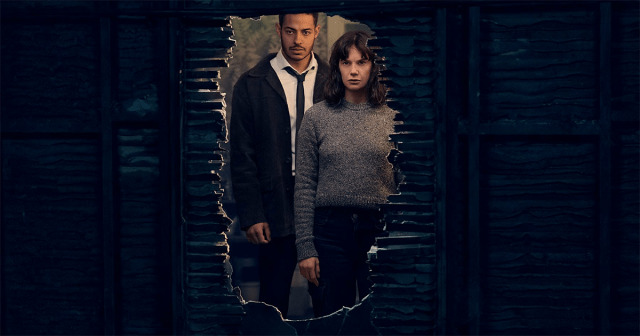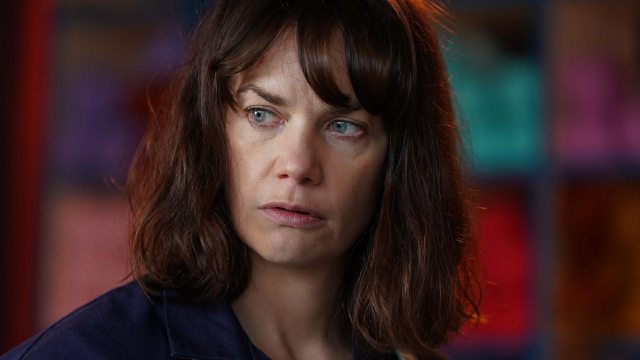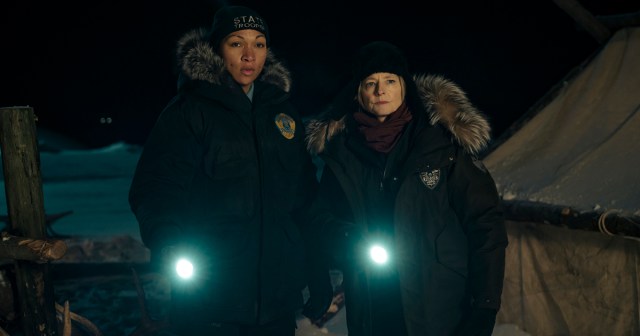
TL;DR
- “The Woman in the Wall” stars Ruth Wilson as a woman grappling with the unresolved trauma of time spent in one of Ireland’s Magdalene laundries as an unwed mother, further complicated by the untimely death of two people connected to her incarceration in the local Mother and Baby Home.
- The series intentionally weaves together genres (mystery, thriller, drama, comedy) as it tackles subject matter that would otherwise be too dark for many viewers.
- The six-episode show was one of the first TV series to be shot using an ARRI Alexa 35 camera. DP Si Bell found its features to be extremely useful when shooting under challenging lighting conditions and a tight schedule.
Motive Pictures’ “The Woman in the Wall” is the latest dramatization of Ireland’s Magdalene Laundries and Mother and Baby Homes (both terms belie the horror of these carceral institutions).
Showrunner Joe Murtagh told the Washington Post, ‟[W]hen we’re talking about the Magdalene Laundries, we’re really talking mostly about the period between 1922 and 1996. And these were institutions for so-called ‘fallen women.’ Originally, that was meant to mean prostitutes, but over the course of several decades in Ireland, that came to include mothers who had children out of wedlock.”
The show centers on County Mayo resident and sleepwalker Lorna Brady (played by Ruth Wilson, who also served as an executive producer for the series), whose traumatic past is brought straight to her living room when she awakes to discover a corpse with a direct link to her time at the local Magdalene laundry.

British Cinematographer’s Robert Shepherd describes the series as “a six-part gothic thriller by Motive Pictures that combines history and in-depth research to create a sobering narrative.”
But that doesn’t fully capture the tone that creator and head writer Joe Murtagh envisioned for the BBC One drama. For one thing, “gothic” calls to mind “Wuthering Heights;” the series is set in 2015 and centers around a national scandal that continued into the late 20th century in Ireland. It is not historical fiction.
For another, Murtagh imbues the writing with plenty of dark humor. He tells the BBC, “Maybe that’s an Irish thing in general. It’s definitely my natural way of writing, just to go at it with some comedy. I also find that the dark humor, it’s weirdly more realistic — in my life experience anyway — than just doing a straight drama.”
For those who’d find that odd, Murtagh says, “I find that in the most horrific experiences in life, there’s always weird moments of humor and things that don’t quite belong. Someone saying something the wrong way, or it not coming out quite right — that I think is just realistic.
“So, I would say it’s a natural instinct. But at the same time, if I stop and think about it, it’s probably the perfect way to tell a story like this.”
READ MORE: The Woman in the Wall (BBC)
‟To the extent it works, the show is a testament to patient and precise world-building,” Angie Han writes for THR. ‟Kilkinure might be fictional, but the portrait creator Joe Murtagh paints of it has the texture of reality — individuals with prickly personalities or idiosyncratic senses of humor, intricate webs of friendships and grudges, rumors and secrets tracing back years.”
Of course, the series’ genre bending doesn’t sit well with every viewer. A review in the Independent concludes: “For some, this will make the story more watchable — less grueling — but for others the introduction of cliché and the imposition of a murder mystery will feel crass.”
KQED’s Rae Alexandra puts it another way: ‟It’s not always an easy watch, but ′The Woman in the Wall‘ is consistently impossible to look away from — a degree of attention Ireland’s real-life laundry survivors have long deserved.”
Cinematography
Even though the subject matter is Stygian, cinematographer Si Bell, BSC, says, “We shot it at the end of the summer in 2022 in the bright and colorful village of Portaferry and there’s a lot of color there naturally, so we were kind of going against the darkness really.”

In addition to the setting, Bell explains, “We created quite a saturated grade and we tried to push that with the colors we used in the lighting and production design. The red room is all red. We used primary green light sometimes and we had vibrant production design and colored houses to give the show even more vibrancy.”
The production relied on the “versatility and handling” of the ARRI Alexa 35 4.6k Super camera, Bell says. For example, “It enabled us to use a pretty slow old Cooke zoom lens when we were doing night, high speed work, pushing the extended ISO using the enhanced sensitivity range. We were doing a lot of night scenes and we used ES ISO which was amazing. In terms of the sensitivity, it doesn’t get noisy when you bump up the ISO, so the biggest difference is how clean it is compared to other cameras.”
Bell found the camera’s viewfinder and flipout monitor to be “so clear, with high resolution and sharp.”
He was not the only crewmember who found the camera’s features to be useful. DIT Cel Bothwell-Fitzpatrick, for one, told British Cinematographer that the internal NDs and Enhanced Sensitivity EI options were crucial, and the remote access to the settings (via HI-5 focus handset or Camera Companion app) was extremely handy.
The Alexa 35 also features 17 stops, which Bell says was crucial because “[t]here were several scenes where the light massively changed outside. I was worried that when we got to the grade it was going to be clipped, and we weren’t going to be able to pull it back, but it was all there.”

Although Ireland’s natural light is famously moody and beautiful, the production often supplemented its interiors for a very specific look.
For example, a scene in episode one featured Lorna’s home lit in a way to simulate sodium-vapor lamp street lights via “Tungsten 12K Fresnels with an urban sodium paper gel,” courtesy of gaffer gaffer Seamus Lynch.
Bell says, “Seamus was amazing and the lighting setup that he rigged in the studio was very flexible. Everything was on motors and easily controllable and he also created different soft boxes, so we could flip between day and night super quick. We had large Tungsten lamps, plus lots of LED for the soft boxes and options of softer light.”
In another scene, Bell recalls, they “lit it with really big soft bounce on a machine outside the window where we basically put a 20 by 40 foot ultra bounce with two ARRI MAXs bounced into it. You could see the whole window from the inside as we positioned the bounce above it out of shot.” This Bell says, created “really soft, natural ambient coming in that balanced the exposure.”
Additionally, every location was rigged to achieve as natural lighting as possible, which was made more challenging because the sets featured hard ceilings.
Northern Ireland’s Yellowmoon was tapped for post work. Bell says, “We had a live grade set up on set and with Yellowmoon we created a LUT and tweaked the CDL shot by shot on set. We started this information in the grade making the process very streamlined.”
Streamlining was important because they needed to create three versions of the show: HDR Dolby vision grade, SDR and HLG. In addition to Yellowmoon’s skilled team, Bell says ARRI’s Color Science and ARRI Look File 4 were important to facilitate workflows.
Bell explains, “ARRI has separated the Color Transform from the creative look file and it’s all LOG to LOG. Therefore, as it’s not baking in the Color Transform, the process of creating HDR and SDR versions is more streamlined.”


